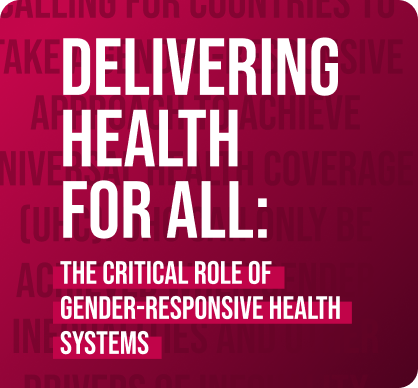 Produced by Women Deliver
May 10, 2016
Produced by Women Deliver
May 10, 2016
Yale Study Examines the Link Between Sexual Violence and Access to Sanitation
The World Health Organization (WHO) estimates that 35% of women worldwide have experienced physical and/or sexual violence. Gender-based violence is a public health crisis that threatens not only the wellbeing of survivors, but the societies in which they live.
Gender-based violence takes on many forms in as many different contexts – including intimate partner violence, violence in and around schools, and rape used as a weapon of war in conflict and post-conflict settings. Preventing violence, therefore, calls for a comprehensive approach that addresses various risks.
A 2015 study by Yale University – Reducing Sexual Violence by Increasing the Supply of Toilets in Khayelitsha, South Africa: A Mathematical Model – examines a relatively neglected risk – the link between access to sanitation and increased vulnerability to sexual violence. Khayelitsha, an urban township in Cape Town, exemplifies the type of environment with high rates of sexual violence and inadequate sanitation facilities.
Improved sanitation facilities remain elusive for 2.5 billion people worldwide. According to UNICEF and the World Health Organization, as many as one in three women globally do not have access to safe toilet facilities. And WaterAid reports that girls and women collectively spend 97 billion hours annually securing a safe place to defecate.
Increasingly, the international development community is recognizing that inadequate sanitation facilities escalate women’s risk of physical and sexual assault. In settings such as refugee camps and peri-urban communities, travel to and from toilets exposes girls and women to perpetrators of violence.

The Yale study developed a mathematical model linking the risk of a sexual assault to the number of available sanitation facilities and the total time a woman must spend walking to or from a toilet. This model was then applied to Khayelitsha, which has an estimated 5600 toilets in 800 separate locations.
According to the study, the average round-trip travel distance to and from a toilet is 210 meters; at six trips per day and 2·5 minutes per trip, this suggests an assault risk exposure time of 15 minutes per woman per day. This results in 635 sexual assaults per year, creating US$ 34 million in assault-related social costs. The direct annual cost of operating the township’s toilets is US$ 6 million, thus the combined annual social cost associated with the current allocation of toilets is US$ 40 million.
But the authors estimate that costs could be minimized by increasing the number of toilets to 11,300 in double the locations, reducing round-trip travel distance to 147 meters; this in turn would reduce total exposure time to 10 minutes per woman per day, lowering the number of sexual assaults to 446—a 30% decrease. While the direct cost of toilet installation and maintenance would rise to US$12 million, this would be more than offset by a decrease in the indirect social costs of sexual assault.
The first quantitative analysis to look at the link between sexual violence and sanitation in terms of its impact on women and society, the study sought to estimate the costs of installing and operating additional sanitation facilities and the impact this might have on both the incidence and social burden of sexual assault.
“What is critical about the study is that when we did our sensitivity analysis – running the simulation many times with different parameter estimates with broad ranges of numbers – we got the same answer most of the time,” said Gregg Gonsalves of Yale’s Global Health Justice Partnership, and one of the authors of the study. “Even if you don't believe our point estimates for the parameters, the analysis still holds up and makes us more confident that our conclusions are valid. We hope it will spur other research to document the phenomenon in greater detail and to strengthen the evidence base to build policy.”


